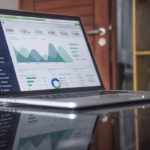
Share The Love:
Table of Contents

11 Tips to Improve Your Facebook Ad Conversions
The changes Facebook made to its News Feed algorithm earlier this year mean that social media marketers need to up their ad game on the platform. The same holds especially true for social media teams with small budgets who have likely seen organic reach figures declining.
One of the most important metrics social marketers track on Facebook are conversion rates. Typically, a conversion refers to the point at which a user converts from being a browser to a buyer.
For many marketers, conversions are a top priority. A good conversion rate is one of the best measures of success, and is key to delivering a strong ROI.
Conversions are not only about driving purchases. They are also about driving actions. Perhaps the goal of a campaign is to increase newsletter subscriptions or for shoppers to add products to a wish list. All of these actions can be considered conversion events.
Facebook ranks as the number one social media site for driving conversions, which makes creating effective Facebook ads all the more important.
Follow these 11 tips to convert your next Facebook campaign into a success.
Bonus: Download a free guide that teaches you how to turn Facebook traffic into sales in four simple steps using Hootsuite.
1. Define your conversion event
Before you try to convert anyone you should have a clear sense of what action you want people to take after seeing your ad.
Types of conversions supported by Facebook include: view content, add to wishlist, initiate checkout, and purchase. You can also create custom conversion events if you have other goals in mind.
Don’t expect one ad to serve all of your conversion goals. Create separate ads for each goal, consider where these goals fit in to the consumer journey, and target accordingly.
2. Keep destination front of mind
An ad is only as good as its landing page. When you’re determining where you’d like the conversion to happen, make sure you have everything in place to deliver on your ad’s promise.
Here are a few steps you should take to prepare your landing page:
- Implement Pixel. Once you’ve identified the page where you’d like the conversion event to occur, you’ll need to add the Facebook Pixel code to the page in order to track the event. For more on this, read Hootsuite’s guide to using the Facebook Pixel.
- Aim for Continuity. If your ad promises one thing, make sure the landing page delivers. You don’t want to have a user looking for shoes land on a pants product page. Design and language should carry through here, too.
- Optimize for Apps. Since an increasing number of people are open to purchasing on mobile, you may want to drive people to your app. In that case, make sure you register your app and integrate with Facebook SDK.
3. Create eye-catching visuals
It takes only 2.6 seconds for a user’s eye to choose where to land on a webpage. The use of eye-catching imagery increases the chances their eyeballs will land on your ad. Most first impressions are informed by design, so treat visuals as you would a handshake.
- Don’t overload images with text. In fact, Facebook recommends you use text sparingly in images, if at all. Instead of crowding visuals with text, consider moving copy to the designated text area. If you must include text, use Facebook’s Image Text Check tool to get a rating.
- Size to spec. Low-res visuals reflect poorly on your brand. Check out Hootsuite’s handy image size guide to make sure your assets meet the right size specifications.
- Use GIFs or videos. Opt for movement over static imagery to nab users’ attention. Don’t forget to test vertical videos for mobile devices.
4. Keep copy short and sweet
Crisp copy is often the second element of a strong ad, but if there’s too much, a user might not even bother to read it.
- Get personal. Using personal pronouns like you and your suggest a relationship between brand and audience. But be careful with “we.” A recent study found “we” is better used with returning customers.
- Avoid jargon. Speak in your audience’s language, not a technical vernacular no one will understand.
- Keep it brief. Too much text can be intimidating, so focus on the essentials and scrap the rest. The Hemingway app helps with this.
5. Include a direct call-to-action
Since conversions are all about motivating actions, a strong call-to-action is essential. Strong verbs like start, discover, find, and explore are great if your conversion goal is to have users visit a product page or learn about your company.
If your goal is to drive purchases or subscriptions, be direct with phrases like “buy now” or “sign up.”
6. Broaden your audience
When creating an ad, opt in to “targeting expansion,” and Facebook will find more users similar to those you have specified in the “interest targeting section.” Not only does this allow you to reach more people, it also has the potential to drive more conversions at a lower cost per conversion.
Don’t forget that you can also create Custom Audiences. If you have data sets such as an email subscriber list, you can upload it to Facebook to find pre-existing customers on Facebook.
Go a step further and use your custom audiences to identify Lookalike Audiences, which are new users that have similar profiles to your customer base.
7. Optimize for conversions
By now you’ve got a lot checked off on your optimized conversions checklist, but don’t forget to literally check off the “conversions” box on Facebook. You’ll find this option under the “Optimization for Delivery” section in the Budget and Schedule form.
Selecting this optimization method is optional, but a few case studies have proven its effectiveness. For example, Save the Children tested both conversion-optimized ads and traffic-optimized ads to determine the most effective way to encourage donations. At the end of its trial period the organization found that ads optimized for conversion generated four times more donations.
8. Choose the right ad format
Depending on your campaign goals, certain Facebook ad formats may serve your needs better than others.
For example, Adidas determined that using video with Facebook’s collection feature would be a good format to showcase the multiple features of its Z.N.E Road Trip Hoodie. As a result, Addidas was able to decrease cost-per-conversion by 43 percent.
Here are a few things to consider when choosing the right format:
- Carousel and collection ads are ideal when you have multiple products or various features to highlight.
- Facebook Offer ads allow you broadcast special deals or discounts you may use as purchase incentives. If someone visits the ad, Facebook will send notifications reminding them to redeem.
- Facebook Canvas ads are best suited for high-impact visuals and experiences that live well on full screen.
Bonus: Download a free guide that teaches you how to turn Facebook traffic into sales in four simple steps using Hootsuite.
Learn more about different Facebook ad types.
9. Track across multiple devices
Regardless of where you’ve determined your conversion event will occur, you should make sure to track clicks and conversions from mobile to desktop. Even if your campaign is only intended to run on desktop, Facebook recommends you install Facebook Software Development Kit on your mobile app (if you have one). This will allow Facebook to capture more audience data and expand the target audience.
10. Consider link click optimization
If you’re ad isn’t driving enough conversions in the first few days, Facebook may not have enough data to properly deliver your ad. Facebook needs approximately 50 conversions per ad within the first seven days to effectively deliver the ad.
To see how many conversions you’ve tallied, check the Ads Manager. If you find that your ad has fewer than 50 conversions, Facebook recommends that you optimize for link clicks instead of conversions.
11. Convert your analytics into insights
As with any social media campaign, it’s important to carefully monitor performance analytics and adjust accordingly. What worked and what didn’t work? Take note for your next ad campaign and try to replicate your success.
Learn more about working with Facebook analytics and the most important metrics for social marketers to track.
Now that you know how to create a Facebook ad optimized for conversions, you’re ready to learn about other methods of social media advertising. Whatever platform you’re on, the principles of conversion are the same: keep the experience clear, direct, consistent, and enticing.
Take your Facebook ads to the next level by enrolling in Hootsuite’s free Social Media Advertising course. Learn how to keep your cost-per-click low and engagement high, plus all the fundamentals of ad creation, bidding, buying, and tracking impact.
Get Started
https://blog.hootsuite.com/improve-facebook-ad-conversions/
On – 12 Jul, 2018 By Katie
Tags
Share This



